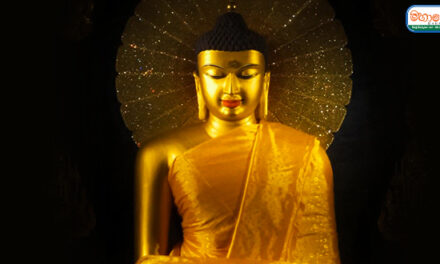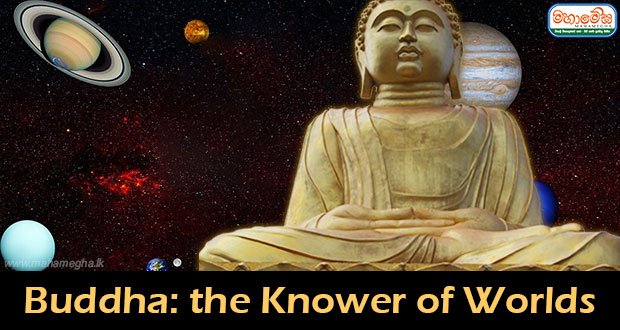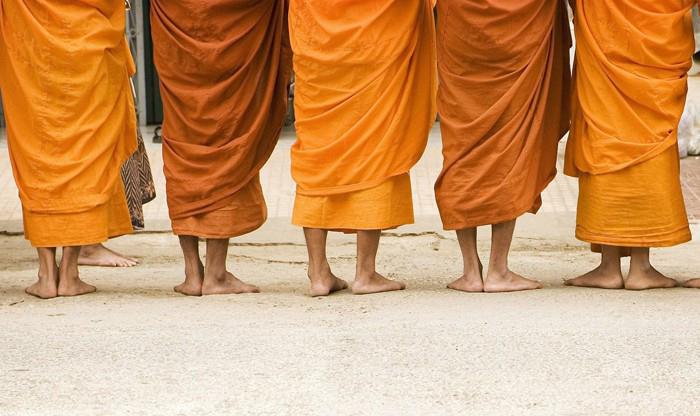“Dear bhikkhus, there are four supreme (noble) truths. These four truths are true facts that exit in the world (tathāni). They are unalterable truths (avitathāni). They do not change under any circumstance (anaññathāni).”
In the above extract taken from ‘Tatha sutta’ of Saṃutta nikaya, the Lord Buddha expounds that there are four things that are true and unalterable. They are the four noble truths. In previous month’s article we learnt the first noble truth in detail according to the discourses. Today we will learn what the Lord Buddha explained as the second noble truth. In the first noble truth the supreme Buddha explained dukkha – a fact that exits in everyone’s life. In the second noble truth He explained the ‘cause of dukkha’ – Dukkha Samudhaya Ariya Sacca – the reason behind all the suffering. The lord Buddha realized that this dukkha-suffering is there because there is something that creates suffering. And that is;
“Kataman ca bhikkhave, dukkha samudayaṃ ariya saccaṃ: Yā yaṃ taṇhā ponobbhavikā nandi rāga sahagatā tatra tatr ābhinandinī, seyyathidaṃ: kāma taṇhā, bhava taṇhā, vibhava taṇhā.
Dear bhikkhus, what is the main reason for the arising of this condition of suffering which is an unalterable truth?
It is the desire which sustains existence, (desire which is) immersed in enjoyment, (desire which) accepts and finds delight in here and in there. What desire is that? It is the desire for sensual pleasures (kāma taṇhā), desire for existence (bhava taṇhā), desire to exist without the existence (vibhava taṇhā).”
Here, we can understand that taṇhā translated as ‘desire’ or ‘craving’ has three distinct qualities;
ponobbhavikā – this means producing rebirth or creating the cause for rebirth. Which means desire helps beings to exist through rebirth.
nandi rāga sahagatā – this means desire is connected with enjoyment, it is accompanied by passion, it is linked with pleasure.
tatra tatr ābhinandinī – this means desire prompts us to accept and find delight in whatever existence we find ourselves in. Whether it is hell or heaven we strive and yearn for happiness with equal enthusiasm. To understand this, think about a human being, a human likes human things such as family, money, food, etc. Now think about an animal. If you think carefully you will understand how an animal likes its family, its food, and its traits.
everyone strive for happiness in their own world. When a being is born in the human world he finds delight in there, and when he is born in the animal world he finds delight there. This is the work of taṇhā.
And there are three types of taṇhā ;
kāma taṇhā – is the desire for sensual pleasure. There are five pleasures we obtain through our senses. What five? Form, sound, smell, taste, and contact. The desire every being, human, animals, gods etc. has for these sensual pleasure is called kāma taṇhā.
bhava taṇhā, – is the desire to exist. Not wanting to end this rebirth.
vibhava taṇhā – is the desire to exist without bhava, which is the formation of karma, or to exist without the body and the mind. Largely, bhava taṇhā and vibhava taṇhā is dormant because kāma taṇhā is dominant in our lives.
When we think superficially we think that desire is in our mind. However, the Buddha who revealed the four noble truths to the world, the Supreme Being who realized everything there is to realize (thus the Buddha is called Tathāgata), said desire is like a glue that has smothered us.
In Maha Sati Patthana sutta of Deegha nikaya the Lord Buddha explains where the desire arises; the desire arises in things that are pleasurable and joyful in this world. What are pleasurable things in the world?
The eye is a pleasurable and joyful thing. Desire arises in the eye.
The forms, the things we see with the eyes are pleasurable and joyful things in the world. The desire arises in things we see.
The consciousness that arises in the eye is a pleasurable and joyful thing. The desire arises in the eye-consciousness.
The coming together of the eye, the forms and the eye-consciousness; eye-contact is a pleasurable and joyful thing. The desire arises in the eye-contact.
The feeling which arises due to eye-contact is a pleasurable and joyful thing. Desire arises in the feelings which arise due to eye-contact.
Recognizing or acknowledging what you see; perception of forms is a pleasurable and joyful thing. Desire arises in the perception of forms.
The thoughts that arise as a result of seeing something or someone are pleasurable and joyful in this world. Desire arises in the thoughts that we think when seeing things.
The craving, wanting, greed which arises for things we see with our eyes are pleasurable and joyful thing. Desire arises in craving for things we perceive with our eyes.
Thinking about the things we see with our eyes is a pleasurable and joyful thing. Desire arises in that process of thinking about what we see.
Thinking about what we saw again and again, is a pleasurable and joyful thing. Desire arises in musing over what you saw.
The same is true for other sense faculties; ear, nose, tongue, body and mind. If desire arises, it arises in these places.
Accordingly, you can see that desire arises for pleasurable things in every aspect of life. If you contemplate carefully you can see how it has smothered you. Once a god asked the Lord Buddha “who gives birth to beings?” and the Buddha replied “desire gives birth to beings”.
Most compassionate Buddha compares desire to many things;
An iron spear that has pierced into life – salla
A net that captures and binds us to the sansaric journey – Jālini
A flood or a torrent that drags beings into a sansaric journey – saritā
Something that has enveloped and consumed beings – visataṇ
Something that has imprisoned beings leaving no room for escape – visantikā
A pus oozing wound
A disease
So far, we learnt the qualities of desire- taṇhā, the types of desire, where desire arises, the similes Lord Buddha has used to explain desire. And we are learning about desire as the second noble truth; the cause for the suffering. Let us try to think about how desire can cause suffering in a level that we understand. If we think of all the heartaches, all the tears, all the moments of sadness in our lives, isn’t it something that we love that has been the cause of it all? All those heartaches, tears, grief is caused by something we want, something we desire. But what is the nature of all things? They change. So when we get attached to something with desire, and when that something changes (in keeping with the nature of the world) we suffer. Suffering occurs because of our desire to things that change. Earlier we learnt where the desire arises or for what we get attached with desire – pleasurable things. And all those things change. Thus, suffering occurs due to desire.
Lord Buddha explains in Gaiha sutta of Saṃutta nikaya, for humans and gods, the things they see with their eyes are their home, where they dwell. They live attached to what they see, the forms. They find delight in what they see, the forms. When the forms change and decay, and when the humans and gods have to give up their craving for forms, when they have to end their longing for form, they become distressed and live is sadness. This is the same for all other sense faculties as well.
As mentioned in the beginning, the Noble Truths are unalterable and everlasting, yet they remain oblivious to all beings of the world. A Lord Buddha with his unsurpassed wisdom is the only one capable of revealing them to the world. We are fortunate to be born at a time when these truths are taught by noble monks. Therefore, let us try to learn and remember the Four Noble Truths. Next article will discuss the Third Noble Truth; Noble Truth of the cessation of suffering dukkhanirodho ariyasaccaɱ.
By Prajapathi Jayawardena












Recent Comments